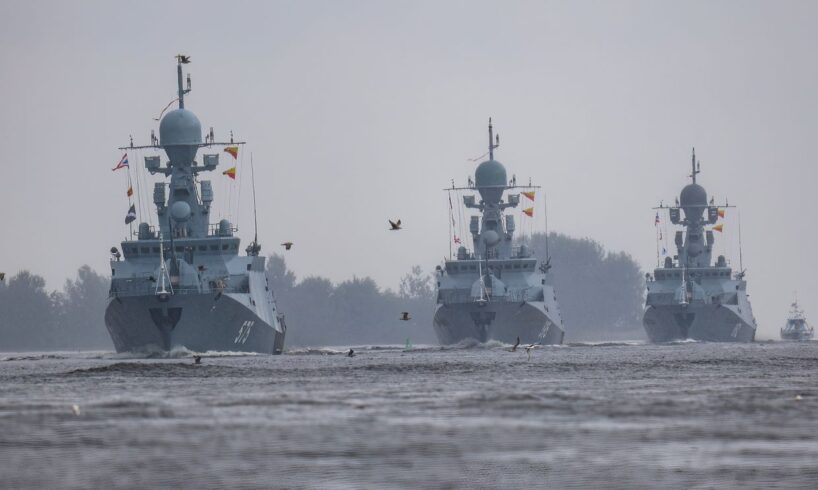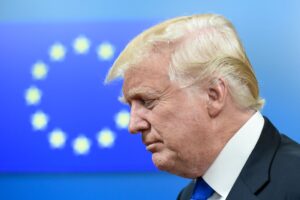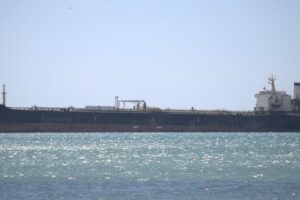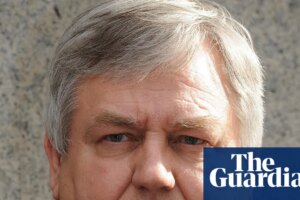
Key developments on July 27:
Moscow cancels Navy Day parade in St. Petersburg as nearly 100 drones reportedly downed across western Russia’We assessed your attempt,’ — top Ukrainian drone commander hints Russia tried to strike multiple unit leaders at onceMoscow warns of ongoing war unless Ukraine complies with its maximalist demandsRubio says Trump ‘losing patience with Russia,’ despite giving Putin 50-day peace deal deadlineRussian drone strike on bus reportedly kills 3, injures 20 in Sumy Oblast
Russia canceled its annual Navy Day parade in St. Petersburg for the first time, citing security concerns amid a wave of drone attacks that disrupted airports and railways across western Russia overnight on July 27, local officials and Russian media reported.
The decision to cancel the Navy Day parade in St. Petersburg, an event traditionally held on the last Sunday of July, was announced by Kremlin spokesperson Dmitry Peskov on July 27, who said it was made “for security reasons.”
Despite the cancellation, Russian President Vladimir Putin reportedly traveled to the city to mark the occasion.
The United Kingdom’s Defense Ministry said it is “almost certain” that Navy Day parades originally planned for July 27 were canceled across Russia due to force protection concerns. While the main naval parade in St. Petersburg was reduced in scale in 2024, this marks the first full cancellation since its inception in 2017.
Russia has reported a growing number of drone incursions into its territory in recent months. While Kyiv has been targeting infrastructure critical to Russia’s war effort, Moscow has significantly intensified missile and drone attacks on Ukrainian cities, frequently targeting civilian infrastructure and causing numerous civilian casualties.
In Leningrad Oblast, dozens of flights were delayed at Pulkovo Airport in St. Petersburg after local authorities reported a wave of drone interceptions in the early hours.
Governor Alexander Drozdenko confirmed that drones were downed in several districts, with debris reportedly falling in residential and industrial zones.
Drozdenko claimed that Russian air defenses intercepted “more than a dozen” Ukrainian drones. In Lomonosovsky district, according to Drozdenko, debris from an intercepted drone injured one person.
In Russia‘s Volgograd Oblast, drone debris reportedly damaged a railway’s overhead power supply system, disrupting electrical infrastructure.
Governor Andrei Bocharov blamed Ukraine for the attack but reported no injuries. Local Telegram channels shared footage suggesting a substation fire may have contributed to the outage.
The Privolzhskaya Railway reported that train service was delayed at Zhutovo Station due to falling drone debris. Trains connecting southern resort towns and central Russian cities were affected by delays of over two hours.
Kaluga Oblast, located southwest of Moscow, was also targeted, with flights reportedly disrupted at the regional airport. Other affected airports included Volgograd and Pulkovo, where at least 70 flights were reportedly delayed.
The Russian Defense Ministry claimed its air defenses intercepted or destroyed a total of 99 drones overnight. Among them were 36 launched at Bryansk Oblast, 21 at Smolensk, 10 at Kaluga, and nine each at Volgograd and Rostov.
Additional drones targeted occupied Crimea, Voronezh, Kursk, Moscow, Nizhny Novgorod, Oryol, Tambov, and the Black Sea coastal area.
Ukraine has not officially commented on the attack. The Kyiv Independent could not independently verify the reports.
Ukrainian drones strike major Russian military radio factory in Stavropol, SBU source says
The plant manufactures countermeasure stations for front-line aircraft and is a major part of Russia’s military-industrial complex.
‘We assessed your attempt,’ — top Ukrainian drone commander hints Russia tried to strike multiple unit leaders at once
Ukraine’s top drone warfare commander, Robert “Madyar” Brovdi, has hinted that Russia attempted a coordinated strike targeting multiple Ukrainian drone unit leaders, according to a Telegram post on July 26.
Brovdi, commander of the Armed Forces’ Unmanned Systems Forces (USF), made the revelation after holding a strategy meeting with commanders from five of Ukraine’s strongest drone units: Phoenix, K-2, Madyar’s Birds, Raroh, and Achilles.
“We assessed your attempt yesterday to hit all of us at once,” Brovdi said in the Telegram post, without offering further details. The post ended with a string of insults aimed at the Russian forces behind the alleged attack.
Drones have played an increasingly decisive role in Russia’s full-scale invasion of Ukraine, with both sides relying heavily on unmanned systems for surveillance, artillery spotting, and targeted strikes.
Ukraine formalized its drone efforts into a centralized command structure in 2024, creating USF as a separate branch of Ukraine’s military in June 2024. A year later, Kyiv created a separate new command group that united the branch with other top drone units.
The new formation united all military units of the USF with the Drone Line, a project launched by President Volodymyr Zelensky in February this year to coordinate and expand five of the country’s strongest drone units.
Brovdi was appointed to lead the command group.
Russia has not publicly commented on any attempted strike against Ukrainian drone leaders. The Ukrainian military has not provided further details about the incident.
Zelensky’s big Ukraine blunder, explained
For many who came to know Ukrainian President Volodymyr Zelensky only after Russia’s full-scale invasion on Feb. 24, 2022, the president’s recent move on anti-graft agencies was jarring. In the early days of the invasion, Zelensky gained hero status after refusing to evacuate as Russian forces closed in on Kyiv. His daily addresses and global appeals rallied Western support and helped secure the military and financial aid that have kept Ukraine afloat. To much of the world, Zelensky became the
Moscow warns of ongoing war unless Ukraine complies with its maximalist demands
Russia wants to resolve its war in Ukraine through “diplomatic and political means” but would continue military operations until its “goals” are achieved, Peskov said on July 27.
Responding to a question from Russian state-controlled news agency Tass, Peskov said that “the goals of (war) must be fulfilled before the principles of future relations with Ukraine can be determined.”
Russia continues to push for the same core demands it outlined at the start of its full-scale invasion in 2022: a ban on Ukraine joining NATO, large-scale demilitarization of the country, and legal “guarantees” for the Russian language, culture, and Moscow-linked religious groups in Ukraine.
The Kremlin has also demanded constitutional changes in Ukraine, including recognition of four Ukrainian oblasts as Russian territory, along with the Crimean peninsula, which it seized in 2014.
Peskov claimed Russia would “prefer” to resolve the conflict through dialogue, but said military operations continue because “opponents rejected the path of negotiations.”
Kyiv has consistently supported negotiations but refused to accept Russia’s maximalist conditions, which are essentially capitulation.
Ukraine has also consistently rejected all demands that involve ceding territory or weakening its military. Zelensky and top officials have said any peace must begin with an unconditional ceasefire.
Peskov’s comments came days after the third round of peace talks between Ukrainian and Russian delegations in Istanbul, where Ukraine reiterated its call for a full ceasefire and humanitarian agreements.
The latest round of peace talks between the two sides took place in Istanbul on July 23, marking the third formal meeting since negotiations resumed earlier this year after a long pause.
Ukrainian officials proposed a meeting between Zelensky and Putin before the end of August, but the Russian side again declined the idea of a meeting between the two leaders.
Russia’s delegation, led by presidential aide Vladimir Medinsky, proposed creating three working groups to address political, military, and humanitarian issues. Moscow also offered to facilitate brief ceasefires to retrieve wounded soldiers and repatriate bodies and claimed it would return the remains of 3,000 Ukrainian servicemen through the Red Cross.
The revived diplomatic push comes as the U.S. increases pressure on Russia to end the war. On July 14, U.S. President Donald Trump warned that he would impose “severe” tariffs on Russia unless a peace deal is reached within 50 days.
‘Stop fueling Russia’s aggression’ — US, China clash over Ukraine at United Nations
The U.S. on July 25 urged China to stop enabling Russia’s war in Ukraine during a UN Security Council meeting, prompting a sharp rebuke from Beijing, which accused Washington of creating confrontation.
Rubio says Trump ‘losing patience with Russia,’ despite giving Putin 50-day peace deal deadline
U.S. Secretary of State Marco Rubio praised Trump as “the ultimate closer” and said Trump is “losing his patience” with Russia over the war in Ukraine, in a televised interview with Fox News on July 26.
Rubio’s remarks come nearly two weeks after Trump gave Russia a 50-day deadline to agree to a peace deal or face “severe” tariffs. Since the announcement, Russia has only intensified its assault on Ukrainian cities and continued to advance along the front line.
Rubio said Trump is eager to secure a peace deal and end the war he “inherited” from the Biden administration, and described the president’s growing frustration with Putin.
“Despite having very good interactions with Vladimir Putin and phone calls, it never leads to anything,” Rubio said. “So, the time has come for some action.”
Critics say Trump’s latest 50-day timeline effectively gives the Kremlin seven more weeks to continue launching deadly airstrikes across Ukraine. The proposed tariffs, at around 100%, are also below the 500% rates proposed in a bipartisan Senate bill targeting countries that buy Russian oil.
Rubio also acknowledged in the Fox News interview China‘s growing role in prolonging the war, accusing Beijing of propping up Moscow’s economy and military efforts.
“China is giving Russia as much aid as they can get away with without being discovered,” Rubio said. “There’s no way Putin could have sustained this war without Chinese support, particularly buying his oil.”
Rubio also highlighted the geopolitical triangle between Russia, China, and Iran, suggesting Beijing benefits from a prolonged war that keeps the U.S. distracted.
Following talks with Foreign Minister Sergey Lavrov in Beijing earlier in July, Chinese President Xi Jinping vowed to deepen strategic cooperation and hailed the partnership as “a model for a new type of international relations.”
Despite China’s repeated claims of neutrality in the Russia-Ukraine war, its support for Russia’s economy and defense industry has established Beijing as one of Moscow’s most crucial partners.
Ukrainian officials reported the presence of Chinese components in Russian attack drones, and intelligence suggests Beijing may be helping Moscow bypass sanctions to ramp up drone production.
How effective were Ukraine’s anti-corruption agencies targeted by Zelensky, and who were they investigating?
Volodymyr Zelensky’s decision to sign a bill targeting the independence of anti-corruption agencies followed mounting investigations that involved high-ranking officials and those close to the president. Zelensky’s critics argue that the corruption cases against his associates and top incumbents were the real reason behind the bill. The President’s Office did not respond to requests for comment. The officials under investigation have denied the accusations of wrongdoing. On July 25, Zelensky
Russian drone strike on bus reportedly kills 3, injures 20 in Sumy Oblast
A Russian drone targeting a bus reportedly killed three and injured 20 in Sumy Oblast on July 27, according to local media.
The attack took place near the village of Yunakivka, located about eight kilometers (five miles) from Ukraine’s border with Russia and about 29 kilometers (18 miles) from the city of Sumy.
“Russians struck a bus with civilians in the Sumy district… There are preliminary reports of casualties. They are being assisted. All emergency services are involved in responding to the consequences of this cynical attack on the peaceful population,” Governor Oleh Hryhorov said earlier.
Later, Kordon media reported that three were killed and 20 were injured in the Russian attack near Yunakivka village.
Sumy Oblast borders Russia to the northeast and regularly faces shelling and drone attacks as Moscow continues its war against Ukraine.
The attack comes just a day after Russian forces launched an overnight attack on Sumy Oblast, injuring three.
Meet Ukraine’s EuroMaidan protesters fighting again for democracy in wartime Kyiv (PHOTOS)
Twelve years after then-journalist Mustafa Nayem’s Facebook post ignited the EuroMaidan Revolution, another social media call — this time from war veteran Dmytro Koziatynskyi — mobilized thousands across Ukraine, united by a different cause. The first wave of protests erupted on the evening of July 22, just hours after the Verkhovna Rada, Ukraine’s parliament, passed a bill widely seen as a direct assault on the independence of the National Anti-Corruption Bureau (NABU) and the Specialized Ant
Note from the author:
Ukraine War Latest is put together by the Kyiv Independent news desk team, who keep you informed 24 hours a day, seven days a week. If you value our work and want to ensure we have the resources to continue, join the Kyiv Independent community.





